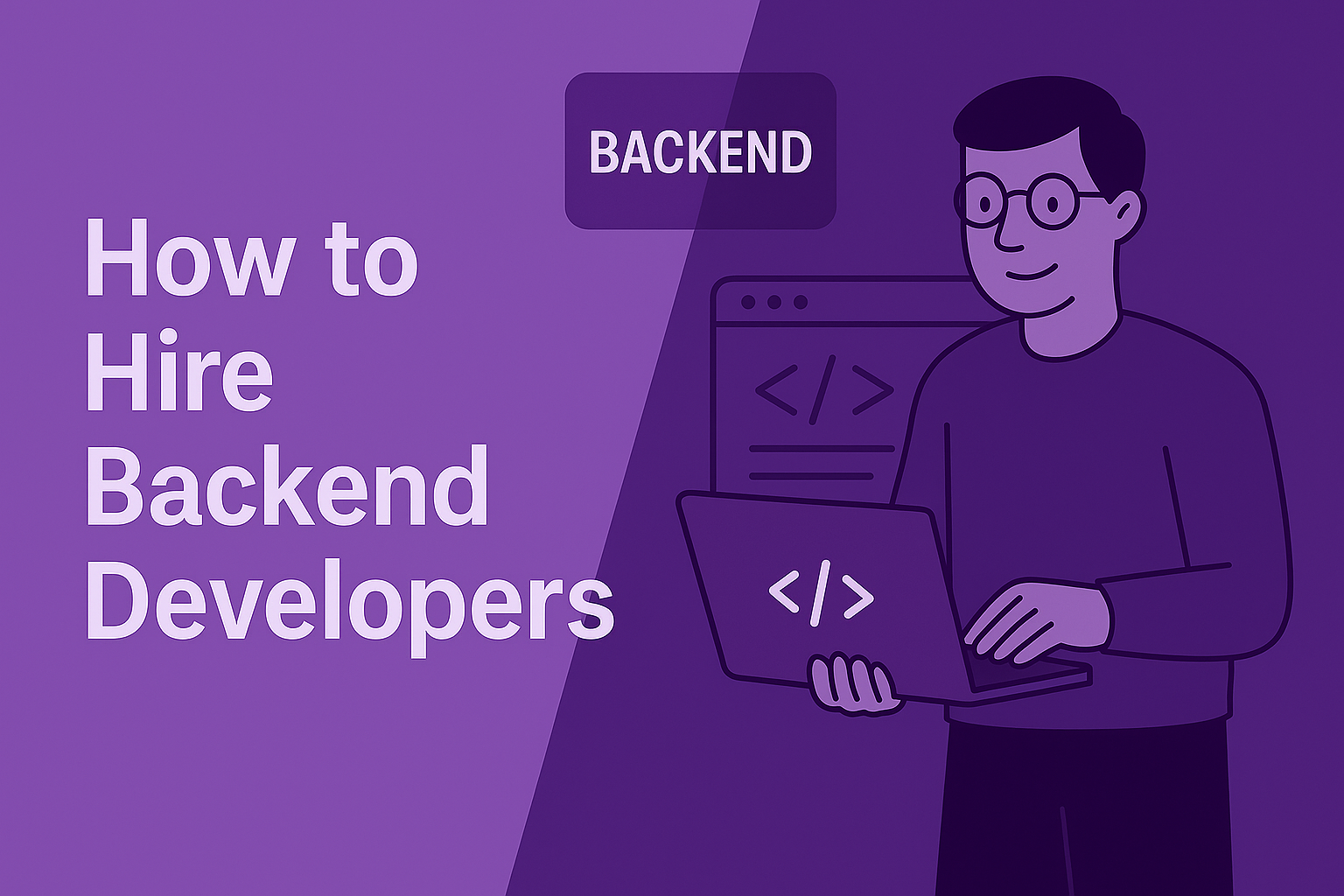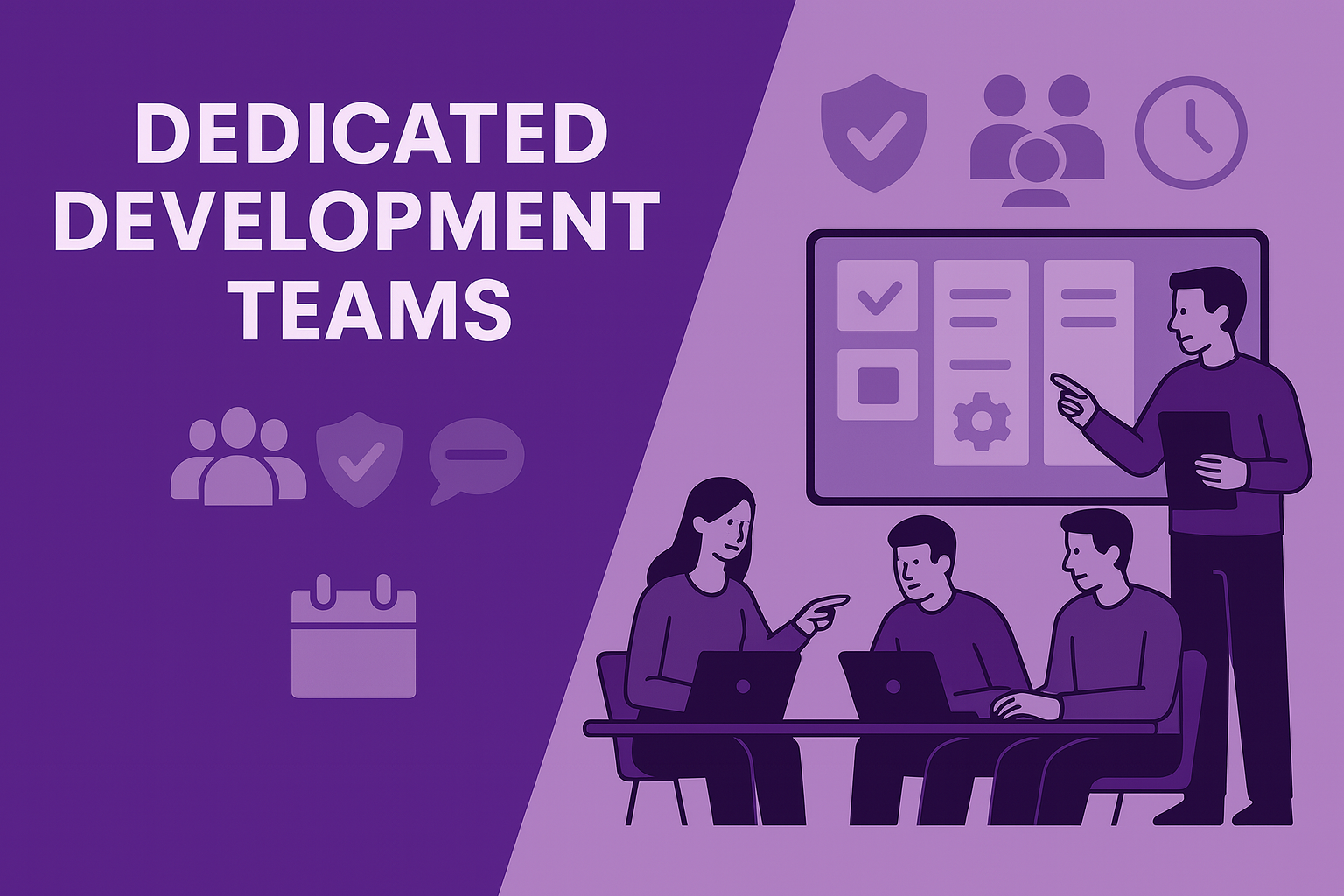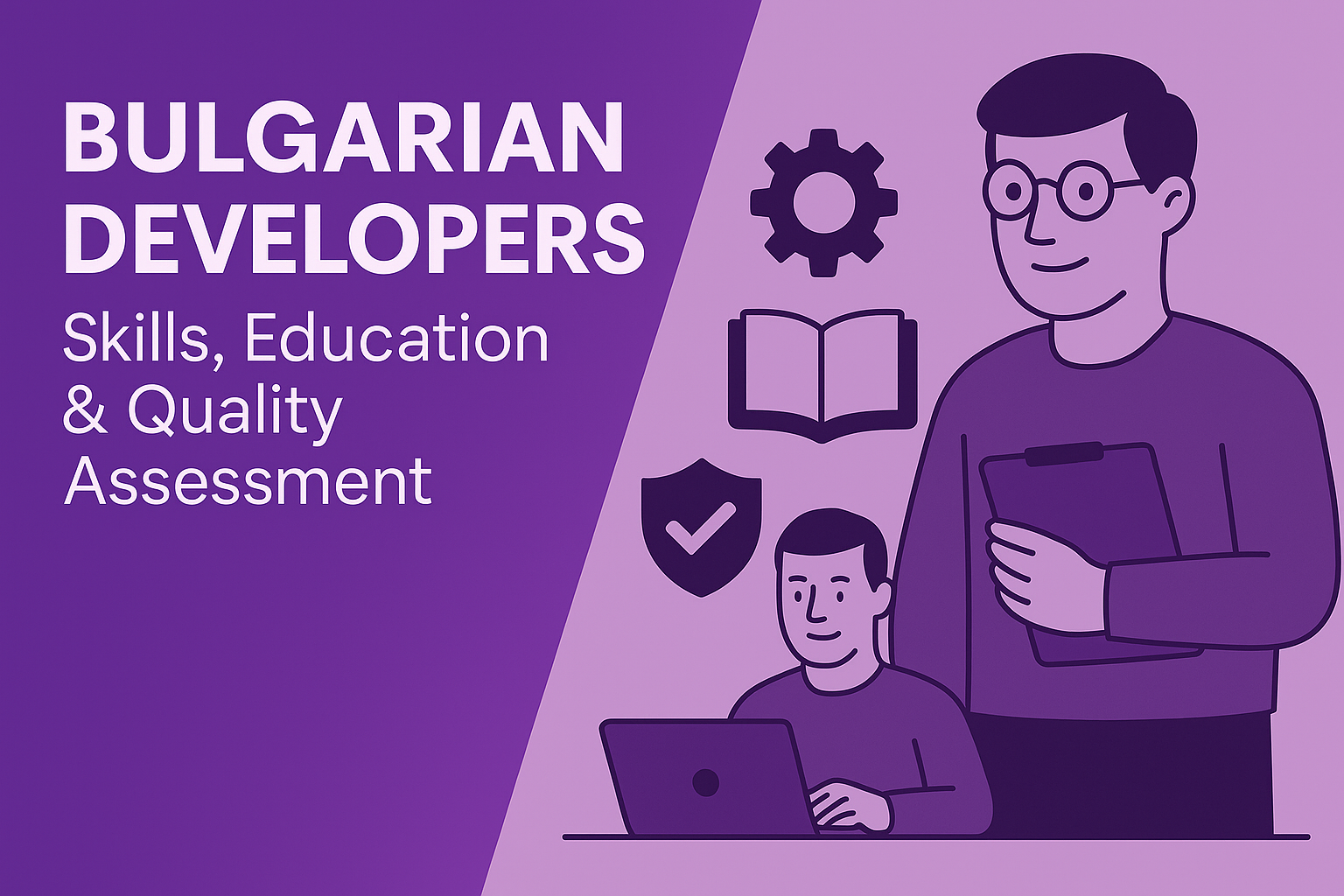How Much Does It Cost to Hire Backend Developers?
Backend developer costs vary significantly based on location, experience level, and engagement model. Understanding these cost structures helps you budget effectively and make informed hiring decisions.
Regional Hourly Rate Breakdown
Eastern Europe (Bulgaria, Poland, Romania): $25-49/hr
Western Europe (UK, Germany, Netherlands): $60-100/hr
North America (US, Canada): $80-150/hr
Asia (India, Philippines): $15-35/hr
Full-Time vs Contract Comparison:
Full-time employees come with additional costs beyond base salary. You'll need to factor in benefits (health insurance, paid time off, retirement contributions), equipment, office space, and employment taxes. These overhead costs typically add 30-40% to the base salary.
Contract or outsourced developers provide more flexibility. You pay for actual work hours without long-term commitments or overhead expenses. This model works particularly well for project-based work or when you need to scale teams quickly.
Hidden Costs to Consider:
Recruitment fees (15-25% of annual salary for agencies)Onboarding and training time (typically 2-4 weeks of reduced productivity)Management overhead (especially for distributed teams)Knowledge transfer and documentation
Staff augmentation through established IT service providers often provides the most cost-effective solution. You gain access to pre-vetted talent without recruitment costs, and you can scale your team up or down based on project needs.
Where Can You Hire Backend Developers?
You have several options for sourcing backend development talent, each with distinct advantages and trade-offs.
Staff Augmentation Services:
This model allows you to extend your existing team with external developers who work as integrated team members. Staff augmentation providers handle recruitment, vetting, and administrative tasks while you maintain direct control over day-to-day work.
Benefits include quick access to talent (often within 1-2 weeks), flexibility to scale teams, and reduced management overhead. This approach works best when you have existing technical leadership and need additional development capacity.
Dedicated Development Teams:
Dedicated teams provide a group of developers who work exclusively on your projects. Unlike staff augmentation, you typically get a complete team including developers, QA specialists, and a project manager.
This model suits long-term projects requiring sustained development effort. You benefit from team continuity, established workflows, and collective knowledge of your systems. Dedicated teams typically require 2-3 weeks for initial setup and team building.
Freelance Platforms:
Platforms like Upwork, Toptal, and Freelancer.com connect you directly with individual developers. This approach offers maximum flexibility and potentially lower costs, but comes with significant trade-offs.
You'll need to invest considerable time in screening candidates, managing contracts, and handling payments. Quality varies dramatically, and you bear all risks related to developer availability, code quality, and project continuity. Freelance platforms work best for small, well-defined tasks rather than complex backend development.
Nearshore Outsourcing:
Nearshore development partners in regions like Eastern Europe offer compelling advantages for Western European and North American companies. You benefit from overlapping time zones (2-4 hours difference), cultural alignment, and strong English proficiency while accessing competitive rates.
Nearshore teams facilitate real-time collaboration during business hours, making communication smoother and project management more effective compared to offshore alternatives in Asia.
How Do You Hire a Backend Developer? [5-Step Process]
Step 1: Define Technical Requirements
Start by documenting specific technical needs. Which programming languages does your project require? Java, Python, Node.js, PHP, or Ruby? What frameworks and databases must the developer know? Which cloud platforms do you use?
Create a skills matrix separating must-have requirements from nice-to-have capabilities. Include the scale and complexity of systems the developer will work with—building APIs for 100 users differs dramatically from architecting systems handling millions of transactions.
Step 2: Source Candidates
Use multiple sourcing channels simultaneously to build a strong candidate pipeline:
Professional networks (LinkedIn, GitHub, Stack Overflow) Specialized IT staffing agencies with technical expertiseReferrals from existing team membersNearshore outsourcing partners with established talent pools
Each channel has different time-to-hire and quality profiles. Referrals often provide the highest quality but slowest volume. Staffing agencies and outsourcing partners provide fastest access to vetted candidates.
Step 3: Vet Technical Skills
Technical vetting separates candidates who can actually deliver from those who simply list impressive skills on resumes. Use practical assessments that mirror real work:
Live coding sessions focusing on problem-solving approach rather than perfect syntaxCode review exercises where candidates explain and improve existing codeSystem design discussions for senior rolesTake-home projects (paid, respecting candidates' time) for final-round candidates
Involve your existing technical team in evaluations. They'll work with the new hire and can assess both technical fit and collaboration potential.
Step 4: Assess Cultural Fit
Technical skills matter, but cultural alignment determines long-term success. Evaluate:
Communication style and clarity (especially for remote teams)Problem-solving approach and initiativeAbility to work independently vs. need for guidanceAlignment with your company values and work methods
Ask behavioral questions about past project challenges, team conflicts, and learning from failures. Listen for self-awareness, accountability, and growth mindset.
Step 5: Streamline Onboarding
Effective onboarding accelerates time-to-productivity. Prepare documentation, development environment setup scripts, and access credentials before the start date. Assign a mentor for the first 2-3 weeks to answer questions and provide context.
Schedule regular check-ins during the first month to address concerns early and ensure the developer has everything needed to succeed.
What Should You Look for When Hiring Backend Developers?
Core Technical Skills:
Proficiency in relevant programming languages and frameworksDatabase design and optimization (SQL and NoSQL)API development and integration experienceUnderstanding of security best practicesVersion control systems (Git)Testing methodologies and tools
Experience Level Considerations:
Junior developers (0-2 years) need significant mentoring but bring enthusiasm and current knowledge of modern tools. They work well for well-defined tasks under experienced supervision.
Mid-level developers (3-5 years) handle most backend development independently. They balance cost and capability, making them the sweet spot for many projects.
Senior developers (6+ years) architect solutions, mentor junior team members, and make strategic technical decisions. You need senior talent for complex systems and technical leadership roles.
Communication Requirements:
Remote backend development demands strong communication skills. Developers must clearly explain technical concepts, document their work, and proactively raise concerns.
For distributed teams, evaluate English proficiency (or relevant language) through conversational interviews, not just written assessments. Misunderstandings in verbal communication cause more problems than code errors.
Time Zone Considerations:
Calculate required overlap hours for your team's collaboration needs. Backend developers often need 3-4 hours of daily overlap for stand-ups, code reviews, and problem-solving sessions.
Nearshore teams in Eastern Europe provide 6-8 hours of overlap with Western European companies and 4-6 hours with US East Coast teams, enabling real-time collaboration while maintaining work-life balance.
Why Hire Dedicated Backend Developers Through Outsourcing?
Access to Global Talent:
Geographic restrictions limit your hiring pool dramatically. Your local market might have 50 qualified backend developers; global sourcing opens access to thousands. This expanded pool means finding specialists in specific technologies and experience levels becomes substantially easier.
Eastern European countries produce 500,000+ IT graduates annually, creating deep talent pools with strong technical education and practical experience.
Cost Efficiency:
Outsourcing backend development delivers 40-60% cost savings compared to local hiring in Western markets. These savings come from regional cost-of-living differences, not reduced quality.
You eliminate recruitment costs, reduce management overhead, and convert fixed employment costs into variable project expenses. This financial flexibility helps startups and growing companies scale sustainably.
Scalability:
Business needs fluctuate. You might need three backend developers today and eight next quarter. Traditional hiring makes such scaling expensive and slow.
Outsourcing partners maintain talent benches, allowing you to scale teams up or down within weeks rather than months. You add capacity for peak periods and optimize costs during slower phases without layoffs or complex restructuring.
Focus on Core Business:
Managing recruitment, HR administration, and employee retention for technical staff consumes significant leadership time and attention. Outsourcing partners handle these operational details, allowing your leaders to focus on product strategy, customer relationships, and business growth.
How Long Does It Take to Hire a Backend Developer?
Timeline expectations vary dramatically by hiring method:
Staff Augmentation: 1-2 Weeks
Working with established IT service providers offers the fastest path to adding backend development capacity. Providers maintain pre-vetted talent pools and handle all administrative setup. You review candidate profiles, conduct final interviews, and developers start work—often within 5-10 business days.
Direct Hire: 4-8 Weeks
Traditional recruitment takes substantially longer. You'll spend 1-2 weeks defining requirements and posting positions, 2-3 weeks screening applicants and conducting interviews, then 1-2 weeks on offer negotiation and background checks. Many positions require 2-4 week notice periods at candidates' current employers.
Dedicated Team Setup: 2-3 Weeks
Building a dedicated development team requires slightly more time than individual staff augmentation but less than direct hiring. The provider assembles a team matching your requirements, establishes communication protocols and project management processes, and ensures all team members understand your technical environment and business context.
Frequently Asked Questions
Can I hire backend developers part-time?
Yes, many outsourcing providers offer flexible engagement models including part-time arrangements. Part-time developers work well for maintenance, support, or projects with variable workloads. Expect higher hourly rates for part-time positions compared to full-time commitments, as providers factor in reduced utilization.
What's the difference between hiring dedicated vs freelance developers?
Dedicated developers work exclusively on your projects through a service provider who handles management, quality assurance, and backup coverage. Freelancers work independently on contract terms you negotiate directly. Dedicated developers provide more reliability and accountability but cost more than freelancers. Freelancers offer maximum flexibility but require more management effort from your team.
Do you provide backend developers for long-term projects?
Most IT outsourcing providers specialize in long-term engagements. Multi-month or multi-year projects allow developers to build deep knowledge of your systems and business requirements, creating increasingly efficient collaboration over time. Providers typically offer preferential rates for long-term commitments compared to short-term projects.





